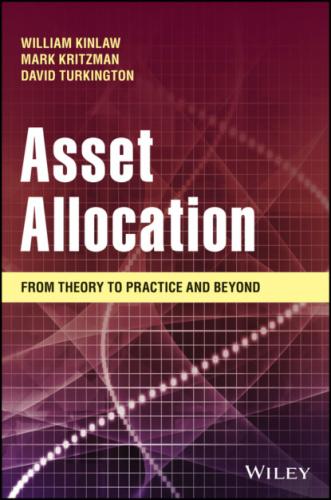In Equation 3.3,
Suppose the four securities are uncorrelated with each other. Then security selection would be more important than asset allocation because the asset classes would be less risky than the average risk of the securities they comprise, which results in less relative volatility between the asset classes than between the securities within each asset class. Moreover, as more securities are added, the asset class standard deviations decline further, which in turn further reduces the relative volatility between the asset classes. If, for example, security returns are uncorrelated and the securities are equally weighted, then the asset class standard deviation diminishes with the square root of the number of securities included. It is only when the correlation between asset classes A and B is substantially less than the correlation between the individual securities within the asset classes that the relative volatility between asset classes is greater than the relative volatility between securities. These relationships are illustrated in Table 3.1.
The upper left panel shows that relative volatility between asset classes is less than relative volatility between securities when they are all uncorrelated with one another. The upper right panel shows the same result when they all are equally correlated with one another. The lower left panel shows the asset class and security correlations that lead to convergence between relative volatilities. Finally, the lower right panel provides an example in which the relative volatility between asset classes is higher than it is between securities.
Determining Relative Importance by Simulation
The associations between standard deviation, correlation, and relative volatility are easy to illustrate when we consider only two asset classes each divided equally between only two securities. These associations become less clear when we consider several asset classes weighted differently among hundreds of securities with a wide range of volatilities and correlations. Under these real-world conditions, it is easier to resolve the question of relative importance by a simulation procedure known as bootstrapping.
Unlike Monte Carlo simulation, which draws random observations from a prespecified distribution, bootstrapping simulation draws random observations with replacement from empirical samples. Specifically, we generate thousands of random portfolios from a large universe of securities that vary only because of asset allocation or security selection. This allows us to observe the distribution of available returns associated with each investment decision as opposed to studying the actual performance of managed funds, which reflects the biases of their investors. Kritzman and Page (2002) conducted such an analysis for investment markets in five countries: Australia, Germany, Japan, the United Kingdom, and the United States based on returns from 1988 to 2001. They showed that the dispersion around average performance arising from security selection was substantially greater than the dispersion arising from asset allocation in every country, and it was particularly large in the United States because the United States has a larger number of individual securities.5
L'Her and Plante (2006) refined the Kritzman and Page methodology to account for the relative capitalization of securities, and they also included a broader set of asset classes. Their analysis showed asset allocation and security selection to be approximately equally important – still a far different result from the conclusion of Brinson, Hood, and Beebower.
THE SAMUELSON DICTUM
We hope we have convinced you that asset allocation does not determine 94% of performance, and that contrary to this assumption, security selection has equal, if not greater, potential to affect the distribution of returns. Does it follow,
